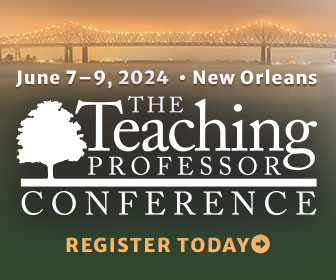In an instructional experiment, I split students into three groups––no quiz, announced quiz, and pop quiz. I used the same instructional style and teaching materials (including the same textbook and handouts) with each of these three groups. I also gave the same two midterms and final exam to each group. There were no mandatory attendance policies or bonuses for attendance. The announced-quiz group took 10 quizzes, each worth 2.5 percent of the course grade. The dates for these quizzes and the material they covered were listed on the syllabus. Students took these quizzes at the beginning of the class. Those absent were not allowed to make up the quiz, late students got no extra time, and late students were not allowed to complete the quiz if they arrived after students had taken it.
For the pop-quiz group, neither the schedule nor material covered on each quiz was provided on the syllabus. Students did not know how many quizzes were being given or when they were scheduled. They took their quizzes at the end of the period and, like the previous group, they had 10 quizzes, each worth 2.5 percent of the course grade. These quizzes tested students on the material covered that day in lecture. The same rules applied—no makeup quizzes for those absent or leaving early. I used different types of questions on the quizzes, including problems and short essays.
I conducted a survey and used statistics to investigate whether quizzes (pop quizzes or announced quizzes) improve students' exam performance and enhance their investment in in-classroom effort (i.e., attendance/participation) or out-of-classroom preparation. I also examined whether these different quiz types serve different instructional purposes in students' learning.
Here's what I found.
- Student effort in class and out of class was higher, and they performed better on exams when quizzes (both the pop and announced quizzes) were given to them before they took exams. This result is consistent with other studies.
- These two types of quizzes did not have the same impact on students' learning. (a) students' exam performance was a little better in the announced-quiz group than in the pop-quiz group; (b) students' attendance was a little better in the pop-quiz group than in the announced-quiz group; and (c) students' out-of-classroom effort was a little greater for the announced-quiz group than for the pop-quiz group.
The first result is not surprising because quizzes (either announced quizzes or pop quizzes) raise the opportunity cost of skipping class. In order to minimize grade loss due to missing quizzes, students need to be in class and prepared for the quizzes, which means they are studying course content more regularly. However, the second result is interesting and merits analysis.
- Students in the announced-quiz group knew when they were having quizzes and what material the quiz would cover. Students in the pop-quiz group were not given this information. Thus, students in the announced-quiz group would probably spend a little more time studying for quizzes than students in the pop-quiz group, and this might give them an advantage over those taking the pop quizzes. This explains why students' exam performance and out-of-classroom effort were a little greater in the announced-quiz group than in the pop-quiz group.
- Pop quizzes create uncertainty. The best strategy for minimizing grade loss due to uncertainty is to attend class regularly. Those in the announced-quiz group had certainty. Hence, students in the announced-quiz group might not attend class as often, some attending only when quizzes or exams were scheduled. This explains why students' attendance was a little better in the pop-quiz group than in the announced-quiz group.
The most important finding was that different types of quizzes serve different instructional purposes. For example, if instructors are most interested in increasing students' attendance and participation, the pop-quiz policy may be a more effective pedagogical method. Furthermore, pop quizzes promote student attentiveness. Those who leave early or don't listen in class will either miss quizzes or be unable to answer questions correctly.
The effectiveness of quizzes in promoting learning outcomes increases when the quizzes are worth a significant portion of the course grade. For instance, if the quizzes count for only 5 or 10 percent of the course grade, students may not take them as seriously, rendering the effects of quizzes on attendance, participation, preparation, and exam performance less significant.
Contact Tin-Chun Lin at tinlin@iun.edu.



